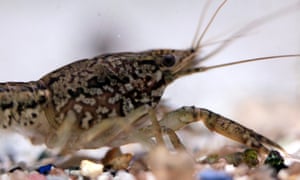 |
| Artist's (mine) rendition of the marbled crayfish |
First of all, hello and welcome to my blog “Unwind the Helix”. The goal of this blog is loosely to discuss recent events in the world of biology, genetics, and evolution.
 |
| Photograph: Fredrik von Erichsen |
It is thought that this relatively new species was
first observed/ created in the 90’s in a tank in Germany when two distant crayfish
species accidentally happened to breed. The resultant mixed crayfish has three
sets of chromosomes, as opposed to humans and most other animals (tripoid vs
diploid), and is able to breed by itself, a trait called parthenogenesis. Because
it can effectively clone itself, it poses a substantial threat as an invasive
species in parts of Europe and especially in Madagascar, where it is thriving
with the help of locals. Since arriving in Madagascar in around 2007, the marbled
crayfish has extended its war front into the interior of the small island
country and is out-competing the local crayfish species. Conservationists see
this invasion as a threat to local biodiversity and have been urging locals to refrain
from helping them but the farmer instead put them in their rice fields to grow
free crayfish snackies. Nobody can stop the unstoppable tide of marbled
crayfish snackies.
Comments
Post a Comment